NOTE:
As with all Mr. Local History retrospectives, we often update the post when we learn stories and are sent photos from our community. We will continue to expand this piece as information becomes available. If you have any stories to share, please post in the comments section at the end of the piece.
Mr. Local History Project
UPDATE:

The AT&T headquarters in Basking Ridge, New Jersey was a monumental shift for corporations moving to the suburbs. Being the largest company in the world at the time, we take a look back at this bold approach AT&T took as they took a giant risk moving to the country. Was it successful? What did the community think? Were they a good corporate citizen. This story introduces interesting facts and stories tied to the historic AT&T’s Basking Ridge construction project that took place from 1970-1975. The MLH Project is engaging with various organizations, historians, and residents who were involved as we look back. If you, or someone you know was involved, we’d love to hear from you.
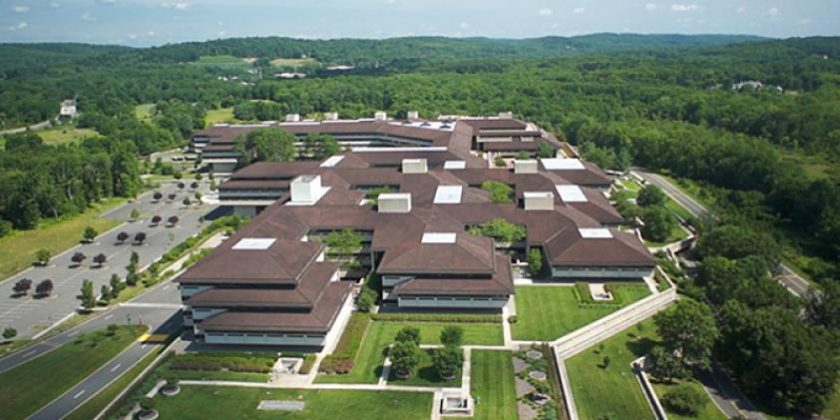
AT&T’s showcase Basking Ridge, New Jersey campus in Somerset County on the corner of North Maple Avenue and Interstate 287 in Bernards Township became the envy of the corporate world from the day it opened in November 1975. Its seven low-slung buildings, attached by tunnels and walkways, hugged the hills and blended in with the rural countryside. The showy headquarters featured a two-story corporate cafeteria with wood-burning fireplaces, a heliport and an indoor waterfall cascading a ton of water a minute. Cars weren’t visible on the campus and were kept out of sight in a 3,900 space underground 15 acre parking garage. But how did it all happen?
AT&T and the Suburbs
Basking Ridge, New Jersey
Tucked in just off a major interstate in the northern end of a sleepy town, buildings as tall as 48 feet are hidden among lakes, a river, a swamp marsh, a forest, and yes built right into a residential area. Nicknamed “295” by many as the facility’s address was 295 North Maple Avenue, AT&T has been known for this type of rural campus in Middletown, Bedminster, Homdel, Piscataway and other New Jersey locations so they became pretty good at it. AT&T even won a number of awards for their sprawling and creative designs to blend their work into the environment. So we take a look back at how AT&T built a campus with office space the size of single tower at the World Trade Center building while attempting to hide it right in front of our noses.
In 1970, AT&T commenced a major project to bring AT&T’s new General Departments to Basking Ridge, New Jersey. What would develop into a two phase construction effort, the project would bring the largest corporate presence ever in Bernards Township’s history. The first phase would bring 1,200 employees to the quiet New York City suburb along with everything that came with such a transformation. 50 years later, the Mr. Local History Project takes a look back at what may residents have called one of the largest transformation that is still debated today.
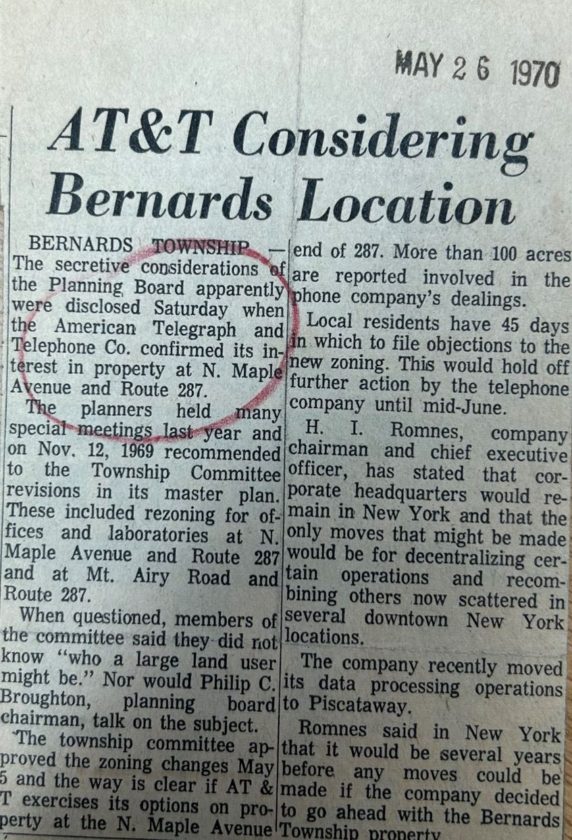
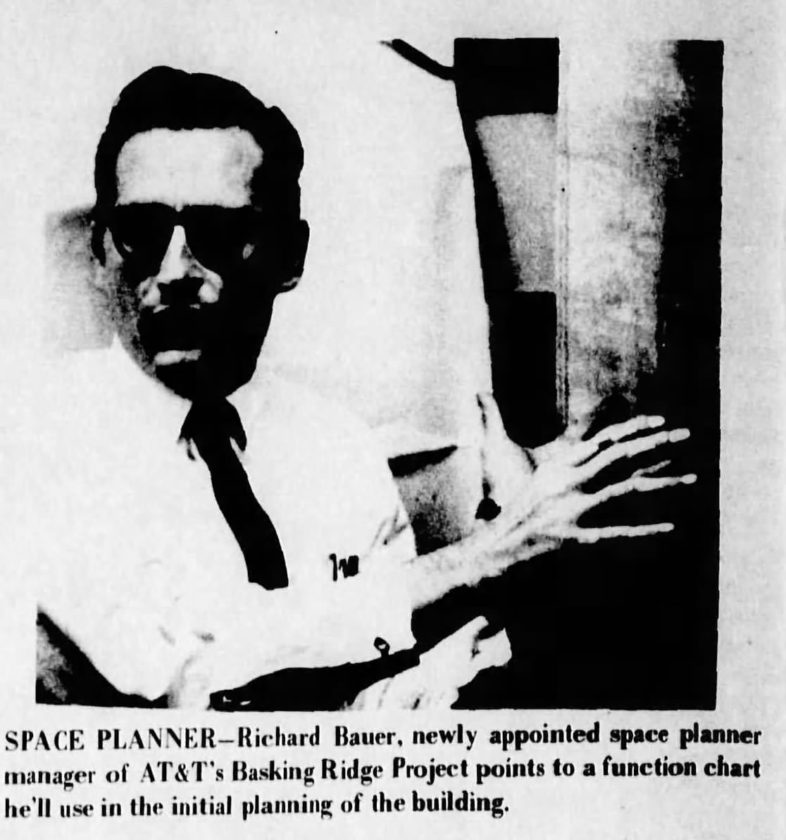
For AT&T, the goal was to complete initial construction of the facility by mid-1975 and relocate 1,200 employees to the new facility. True to their schedules, employees started moving into the facility in November 1975. Interestingly, AT&T reported that almost 99% of the employees were already New Jersey residents so relocation to Bernards Township would actually reduce their commuting time to New York City. As a reference, homes in nearby Murray Hill were averaging $60,000 near the Bell Labs facility. It was reported that homes were just $30.000 on average just five years before Bell had arrived and taxes had risen from $800 average to over $1,200 on average. So there was optimism for the real estate market that homes would increase in value around Bernards Township as well.
On May 26, 1970 the secret was out and AT&T announced that it was considering a location in Bernards Township for a new office complex. Then on June 15, 1970 it was promoted in local newspapers that the AT&T office plans were un-apposed and moving forward. The area was chosen for its close proximity to AT&T’s other key offices in Piscataway and Murray Hill.
Starting in 1970, AT&T started acquiring real estate, making sure that the proposal could actually happen. The firs boundaries of the site in Bernards Township is bounded on the south by Madisonville Road, on the east by Osborn Pond, on the west by North Maple Avenue and Interstate 287 and on the north by a swamp and the Passaic River. As of 1971, AT&T would acquire tracts of land totaling 150 acres in Basking Ridge, New Jersey. The 2.7 million square foot complex, situated just south of Interstate 287, would include 1.35 million square feet of office space once completed. In conformance to local zoning requirements, the structures and buildings only occupied 10% of the 150 acres, complying well with in the zoning ordinances. A new lake was was even created covering about 7 acres northwest of the building to serve as a settlement basin for water runoff and flood control.
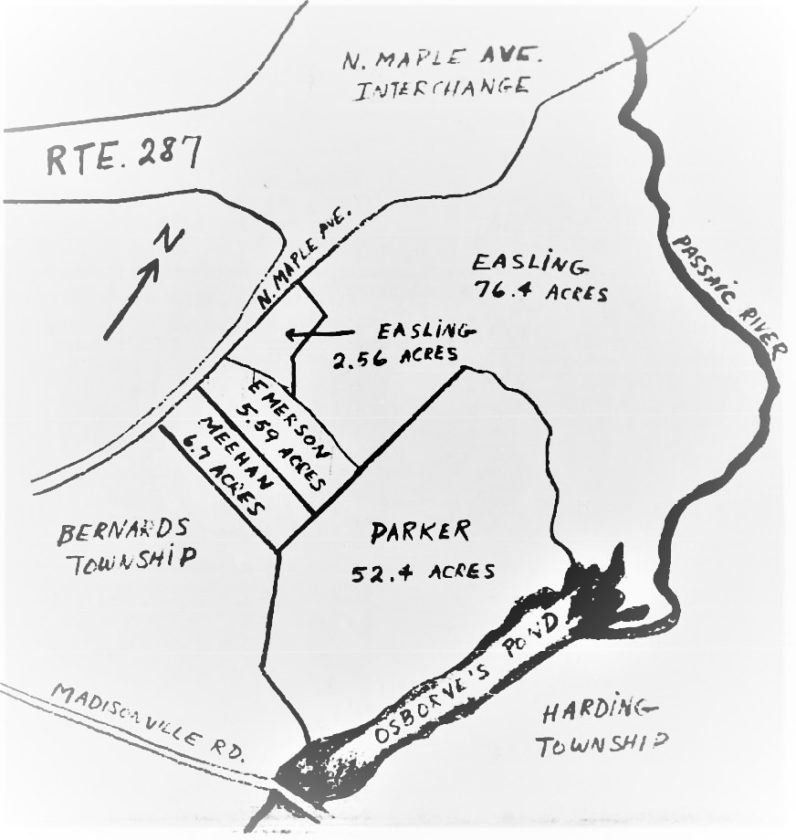
AT&T was very busy over the summer of 1970 as they commenced their buying spree, negotiating with local residents to acquire the needed property for the project. On October 27, 1970 it was reported that AT&T had finished acquiring its initial 144 acre site in Bernards Township at a cost of $1.6 million, or about $11,100 per acre. The documents were filed with the offices of the Somerset County Clerks office on October 26, 1970. The area was within a newly created office/laboratory zone sanctioned by the Basking Ridge Planning and Zoning boards.
Once the land acquisitions were completed, AT&T would prepare schematic drawings of the first designs for the AT&T board.
- There were 5 key acquisitions that contained the initial 144 acres needed to proceed with the AT&T plan:
- $757,980 – 79 acres – Dr. Vera Dettweller Easling 295 N. Maple Avenue
- Emerson – 5.69 acres for 285 N. Maple Avenue
- $610,000 – 55 acres – L.H. Bligh Parker for 234 Madisonville Road
- $150,000 – 4 acres – Allan A. Swenson for 246 Madisonville Road
- $75,000 – 6 acres – Edward J. Meehan Jr. for 275 N. Maple Avenue
- Additional acquisitions:
(If anyone knows the families or if a house was razed or moved, we’d love to hear from you.) Verizon owns all five above plus the ones noted below.- 275 N. Maple Avenue – $75,000 – 6 acres – Edward J. Meehan Jr.
- 265 N Maple Avenue
- 249 N. Maple Avenue
- 237 N. Maple Avenue
- 210 Madisonville Road
- 223 N. Maple Ave
- 166 Madisonville Road
- 172 Madisonville Road
- 180 Madisonville Road – We lived at 180 Madisonville from 71-81. The property was raised some time ago. (Eric Odderstol)
- 188 Madisonville Road
- 196 Madisonville Road – One of the houses at the bottom of the hill on Madisonville – I’m guessing 196, was sold in 1975 for a dollar to whomever would pay to have it moved… I remember watching it go down the street. (Eric Odderstol)
- 202 Madisonville Road
- 210 Madisonville Road
- 246 Madisonville Road – $150,000 – 4 acres – Allan A. Swenson
The AT&T Interactive Map – History Tracking
Want to share your history on the map? Drop us a note with your story – Contact Us. AT&T also owned all but one of the surrounding 14 residential lots that front North Maple Avenue and Madisonville Road. Those lots, which include 11 homes, have assessments totaling $4.64 million.
As we find additional information regarding the properties, photos, and details, we will post them to this interactive Google map.
House Razings and Relocations
A number of homes on the AT&T property were either razed or relocated. AT&T was very sympathetic to keeping homes that were built in the mid-late 1700s. As we find additional information we will add it to the accompanying interactive google map above.
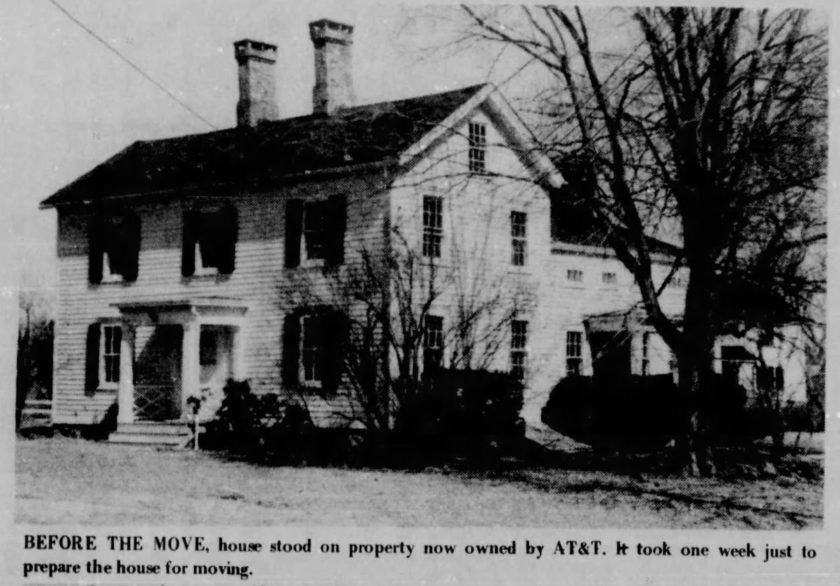
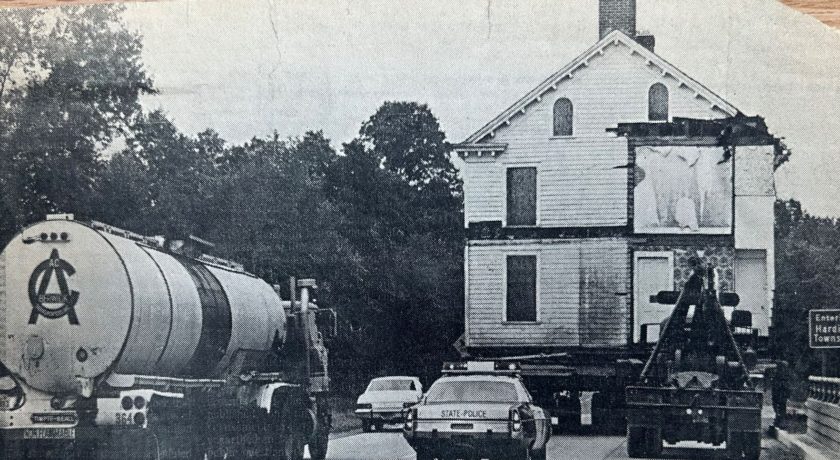
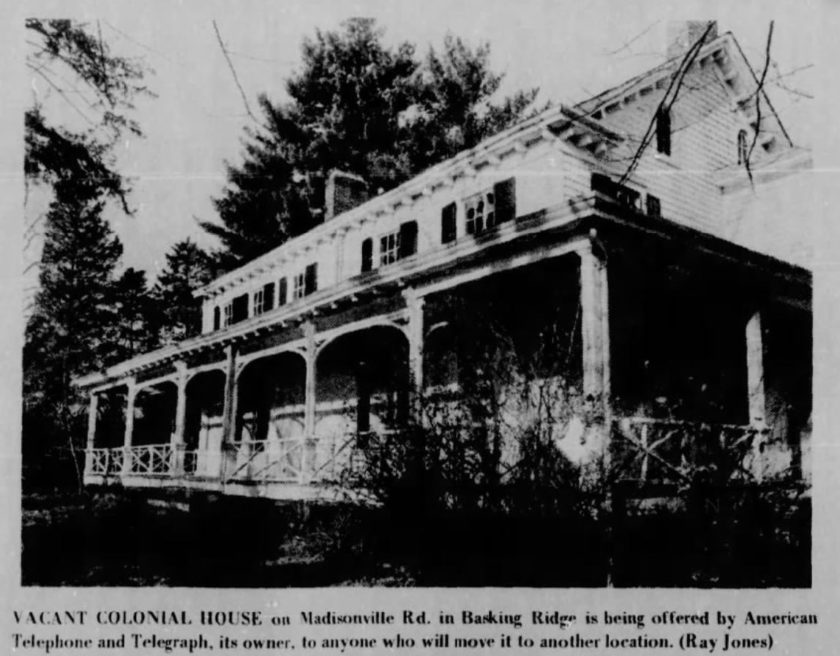
The project’s chief architect was James A. Barthold, who worked primarily for the Vincent Kling and Ballinger architectural firms in Philadelphia. He specialized in construction administration and overseeing construction of the AT&T Basking Ridge project. Some of the more distinctive project features include a two-story cafeteria, wood-burning fireplaces and an indoor waterfall. The structures design was set to two, three, and four level offices. Two levels of garages would be underneath. Electrical and telephone lines were installed underground to provide a cleaner looking environment.
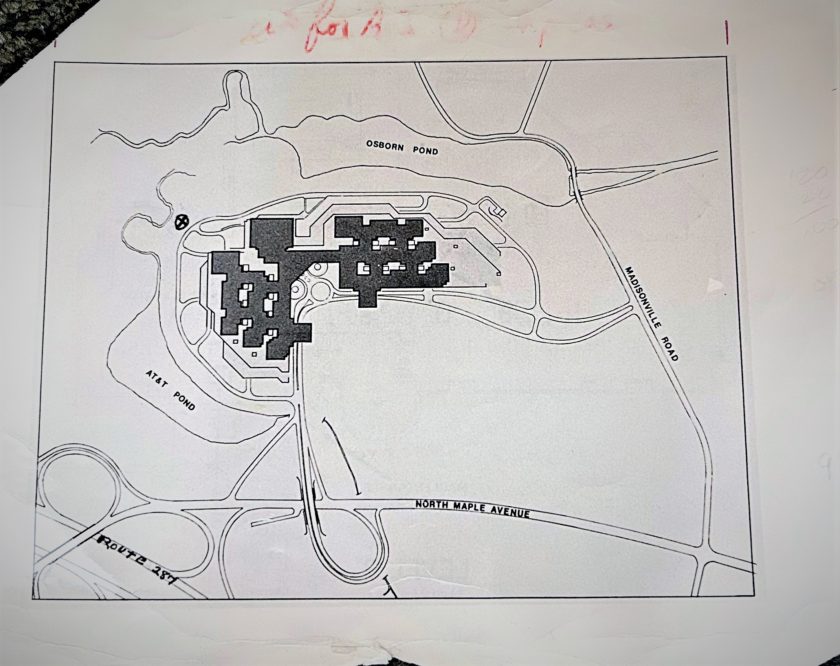
1974 – Phase 1 Construction
Construction of the facility began in 1974 and was built in stages over a proposed 10 year period. Only July 2, 1970 it was reported that the 45 day wait period had ended and the rezoning of the site was in effect. 5 additional property owner options were also executed. The building would use 28 acres of the total property. Architect Vincent Kling had previously won awards for campus style layouts of industrial buildings. Only administrative business would be conducted at the site and no research units would be present as the Murray Hill Bell Labs served that purpose.
Heavy equipment used for the construction would enter through the N. Maple Avenue entrance and a second access point from Madisonville Road was used for construction workers to reach their paved parking area. The pavement was later removed and replaced with grass. A “truck wash” was used to prevent dirt and mud from being tracked into nearby neighborhoods. There were an estimated 800 construction workers on the site at any given time.
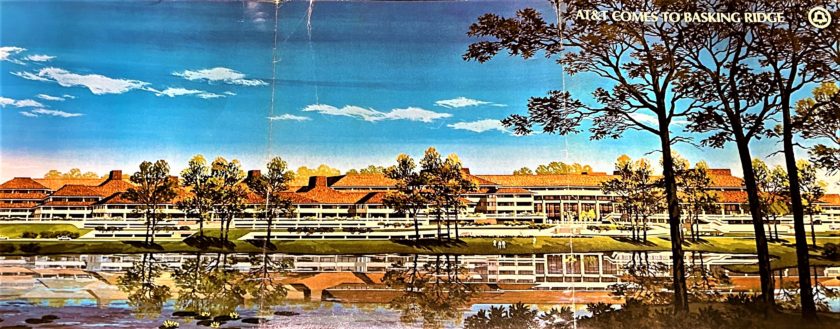
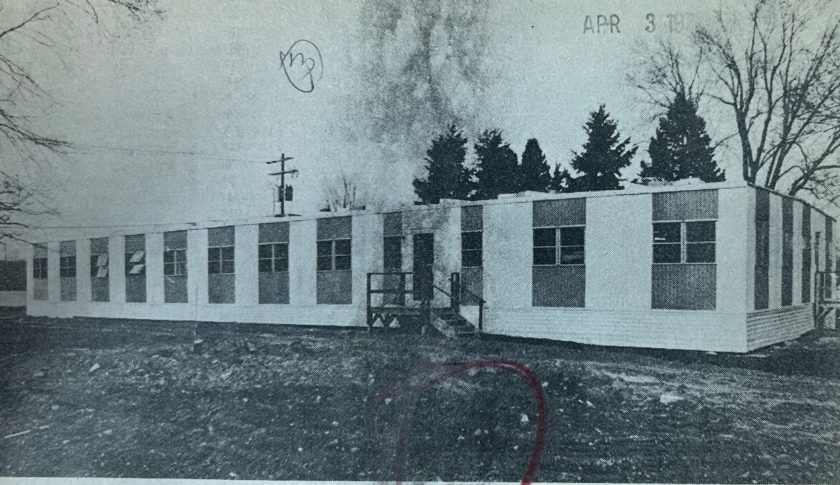
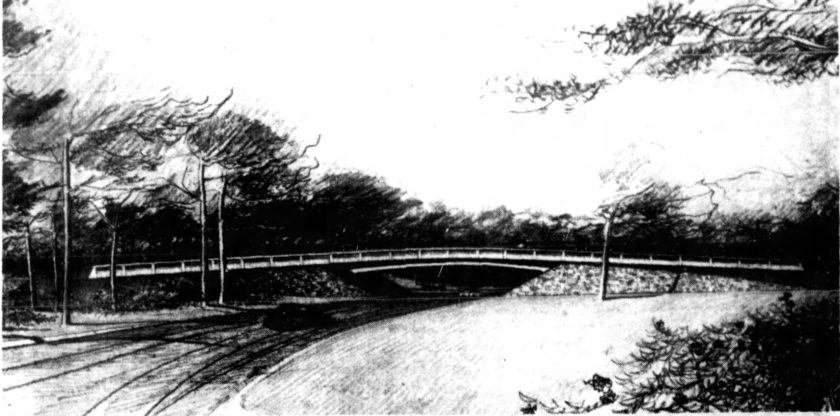
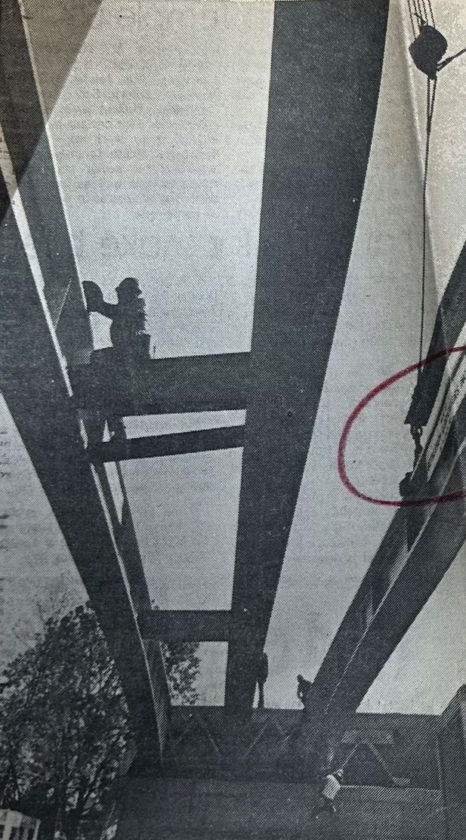
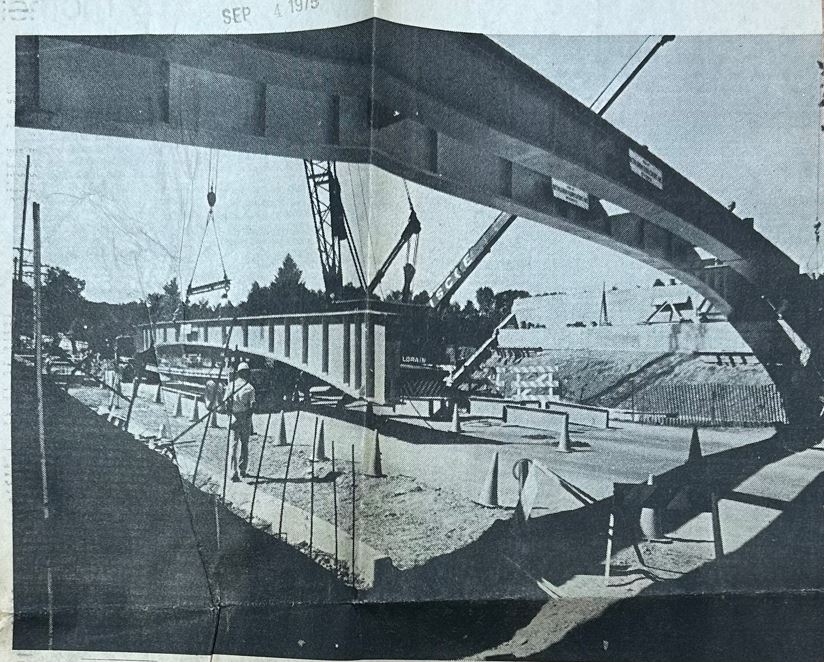
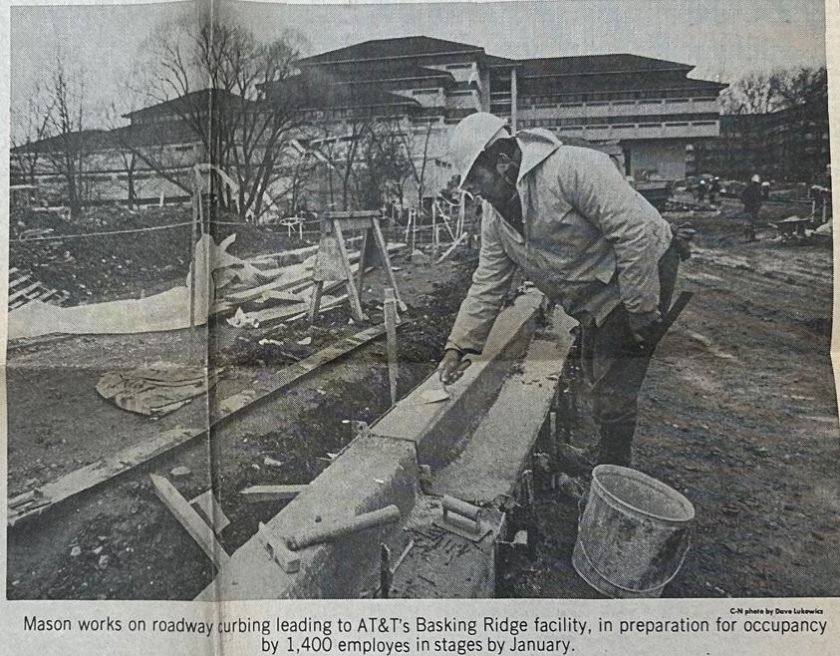
1975, November – The 2.7million square foot complex, situated on 130 acres just south of Interstate 287, included 1.35 million square feet of office space in seven inter-connected buildings and 1.35 million square feet of garage and mechanical space. There were 3,900 underground parking spaces and a helipad. The complex opened in November 1975, five years after AT&T assembled the tract and announced it would relocate its operational headquarters from Manhattan. Before long, local real estate values soared and many homeowners were employees of the telecommunications giant. It’s doors opened to over 1,600 employees in 1975. They would add another 1,300 the following year adding approximately 100 additions per month.
AT&T also owned all but one of the surrounding 14 residential lots that front North Maple Avenue and Madisonville Road. Those lots, which include 11 homes, had assessments totaling $4.64 million. The lots were sold in a package with the complex. Another property that was later added was the AT&T Learning Center, a 171 room conference inn across the street at 300 North Maple Avenue.
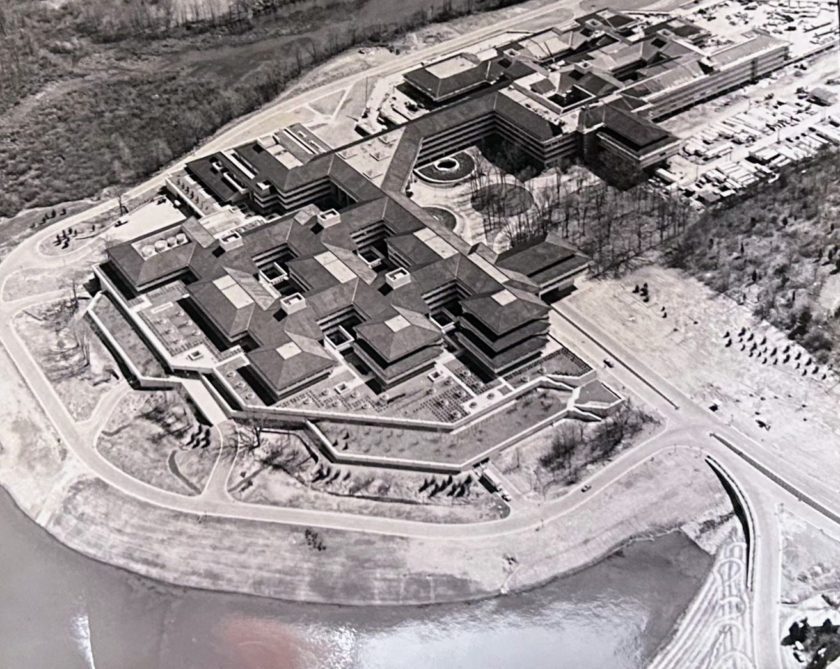
Tax Assessments
1977 AT&T property assessed at $93.6 million. After a number of years of litigation between AT&T and the township, finally in 1980 AT&T aligned on a tax rateable of approximately $3million/year which represented approximately 30% of the total annual municipal property township tax.
At AT&T’s peak, nearly 6,000 employees worked at AT&T before the consolidation to other areas commenced. Mayor Robert M. Deane, commercial ratables became the state’s largest one property tax appeal ever filed in New Jersey (Nov 26, 1979). The world’s biggest corporation agreed that $80 million real estate assessment for AT&T General Departments complex. The decision put over $2.4 million in the Bernards Twp. “kitty”. AT&T after building the facilities in Basking Ridge and Bedminster became the largest taxpayer in Somerset County. Total taxes per year were quoted at $3.9 million, or about 39% of the total collected per year in Bernards Township. In 1980, a special set of hearings were held to determine how to use the $2.4 million escrow.
As a good corporate citizen, AT&T contributed to local organizations during the construction including two hospitals, the fire department, and the local first aid squad.
The Facility
In 1975 there was a new corporate complex in Basking Ridge. Its seven low-slung buildings, attached by tunnels and walkways, hugged the hills and blended in with the countryside. The headquarters featured a two-story corporate cafeteria with wood-burning fireplaces, a heliport and an indoor waterfall that cascades a ton of water a minute. Cars weren’t visible on the campus, and were kept out of sight in a 3,900 space underground parking garage covering 15 acres. There was also a village with a bank, barber, and other amenities.
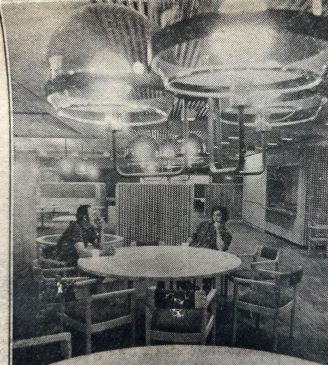
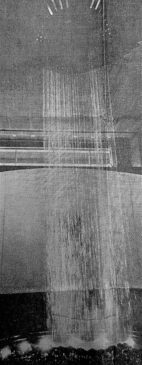
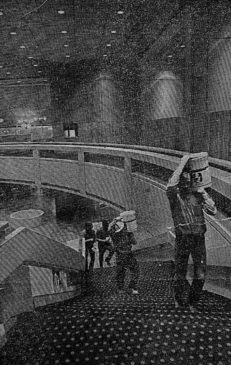
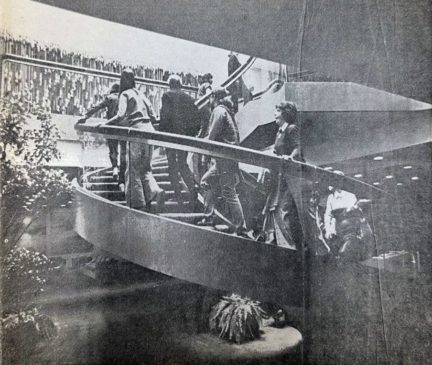
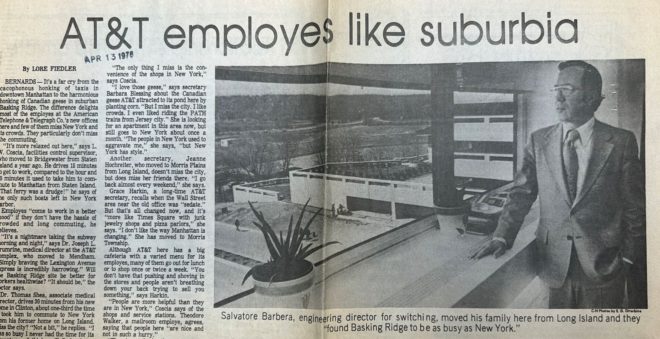
Other Tidbits
Racist Controversy
An interesting attempt to block the project was put forth by the Suburban Action Institute in January 1971, a privately funded activist group, charged that AT&T was “committing racial and economic discrimination by relocating in “discriminatorily zoned” Bernards Township. The institute was asking the EEOC to block the project. “AT&T is fleeing from an urban area with heavy black and Spanish speaking populations to a “white oasis.”

It was later resolved in court. The opinion; “No member of a minority will lose their job because of AT&T’s move to Basking Ridge. Anthony Pappas, Public Relations official for AT&T, reacting to charges by the Suburban Action Institute. A second charge was introduced that there wasn’t any low or moderate income residential housing in the area did lead to other future lawsuits and injunctions led by Basking Ridge’s Roy McDonald Taylor and his wife, but they didn’t include AT&T and focused on the Bernards Township Planning Board and the Township Committee.

There were also claims made that Mayor Peter Mangano and former Mayor Robert O’Neill had a conflict of interest with AT&T . The accusations were made by resident Tudor Finch as a final attempt to halt the project using a local ordinance #331. It was later back pedaled that there was “possible conflict of interest” and not “actual conflict of interest”. Nothing came from the suit.
- The complex cost AT&T $219 million to construct. The waterfall alone had an estimated cost of $250,000. The underground garage for 3,500 cars cost an estimated $40 million to construct. It would later be sold for $200 million to Pfizer in 2002.
- AT&T won Somerset County’s Land Development Award (Commercial) 1985 for the AT&T Learning Center
- AT&T’s Golden Boy statue of the “Spirit of Communications” didn’t make it to Basking Ridge until 1992, 17 years after “295” opened.
- Helipad Disagreements: In 1975, the helipad was limited to 15 flights per week, with no more than 5 on any given day that must be conducted during daylight hours from Monday-Friday only. This was Bernards Township’s first helipad. Noted as a Class 1 Helipad license, the state did approve the helipad in 1977. On August 13, 1984, AT&T was requesting 65 helicopter flights monthly and 780 flights annually. The deal would limit 10,000 pound large helicopters for the 4,000 pound craft. The pad was used mostly to take a 15 minute flight from AT&T’s lower Manhattan offices to the 295 N. Maple Avenue facility.
- The Old Mill Inn hotel was built and opened just north of Interstate 287 soon after AT&T opened in 1977. It was the only hotel between Morristown and Basking Ridge.
27 Years Later – the Experiment Was Over
In 1996 signs started showing that there were problems at AT&T
AT&T sadly had to unload its bucolic corporate fortress in 2002 in what analysts call the beginning of the end for the once mighty giant. The AT&T campus, which had grown to over 200 acres of rolling hills in horse country of northern New Jersey, was put on the block for more than $300 million. Ironically, after sitting vacant for years it was first sold to Parmacia of Peapack, left vacant and was finally scoffed up by Verizon Wireless as their corporate headquarters.
An interesting look at the Basking Ridge Fire Company’s training video taken at AT&T headquarters (VIDEO)

Special Thanks
A special thank you to the Bernards Township Library for access to their history files and to the residents of Basking Ridge who shared their thoughts and experiences during the period. As a resident of Bernards Township and home to the Mr. Local History Project we are always amazed at what we find during these retrospectives. Thanks all!
UPDATE:
Remember AT&Ts Golden Boy with some fun retro swag.

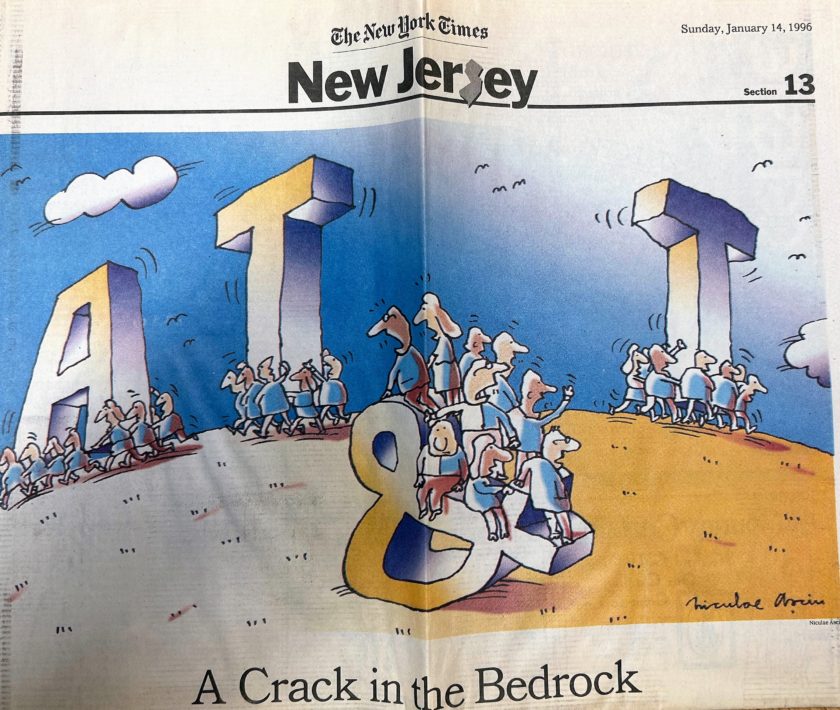
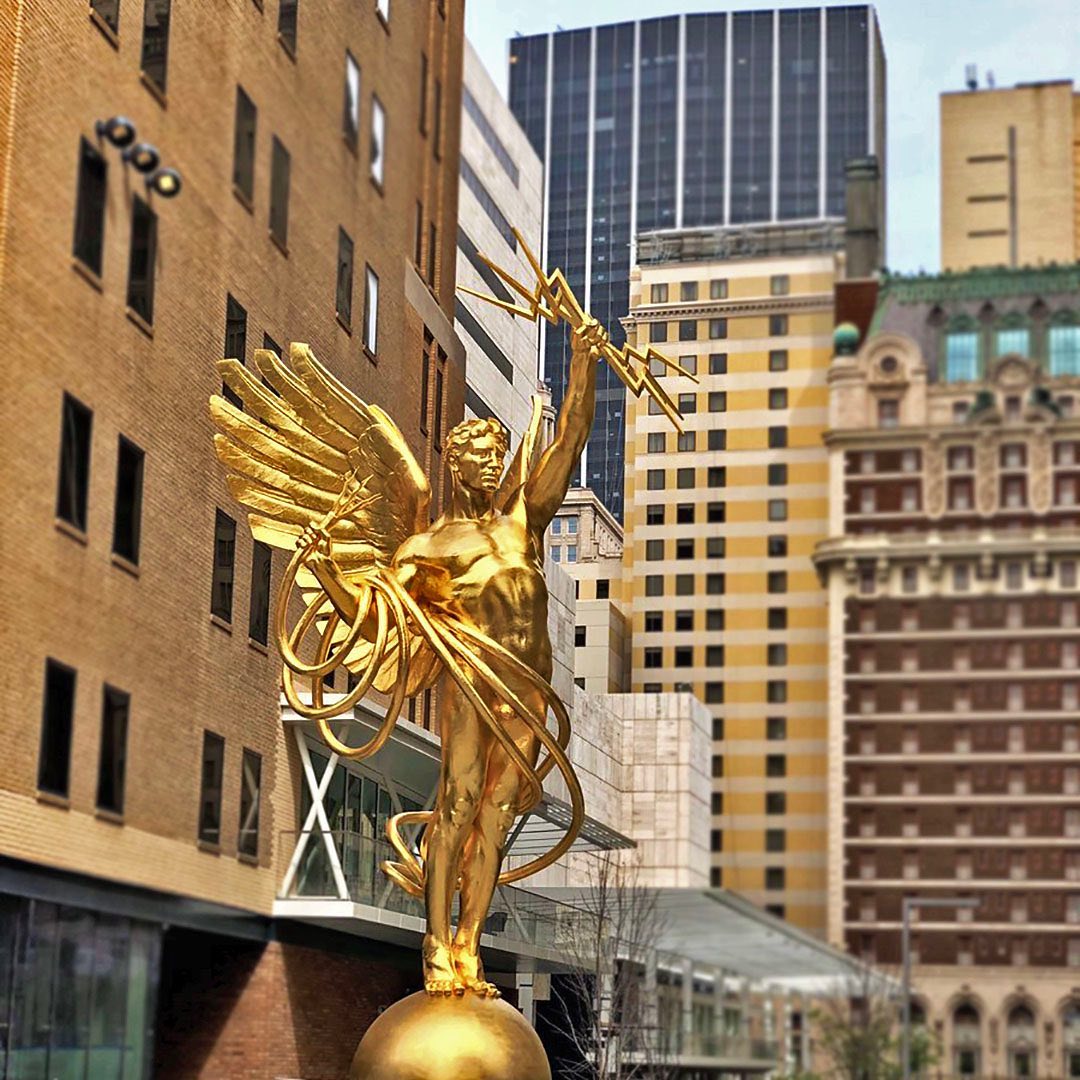
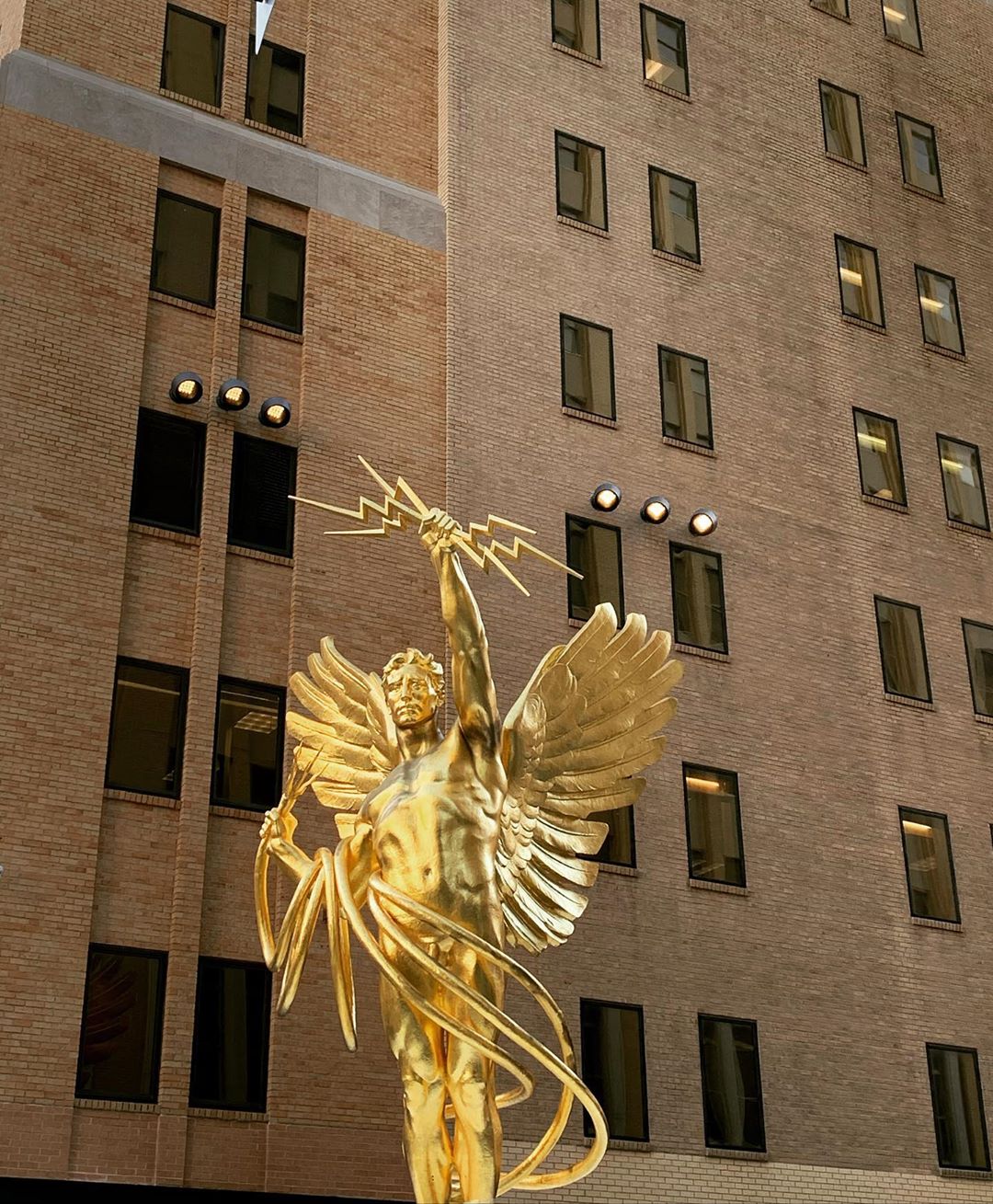
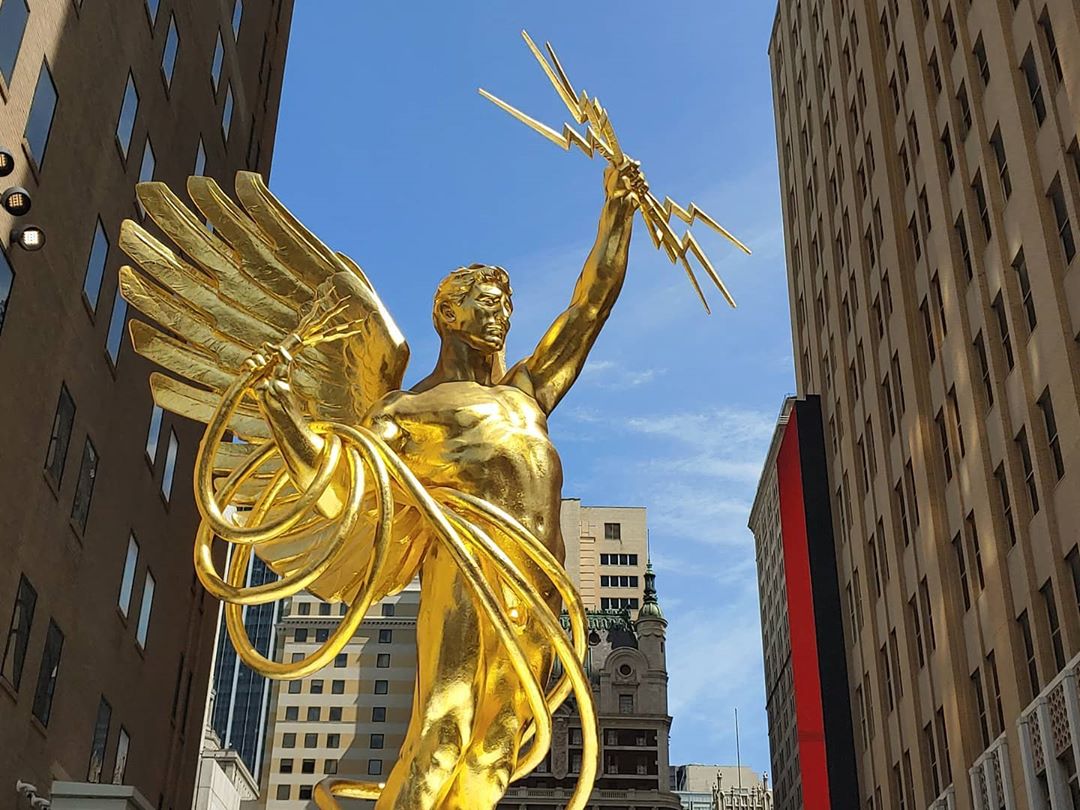
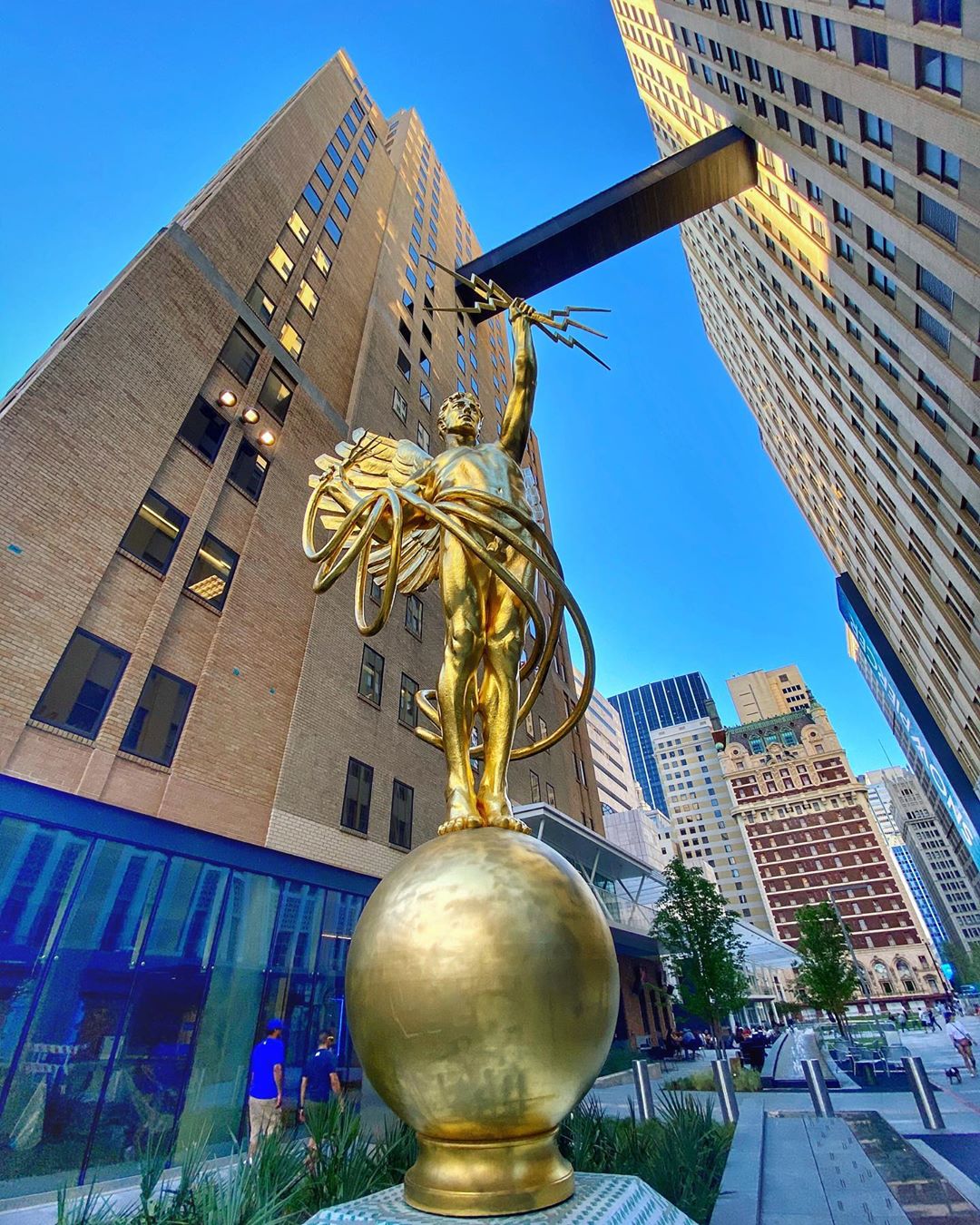
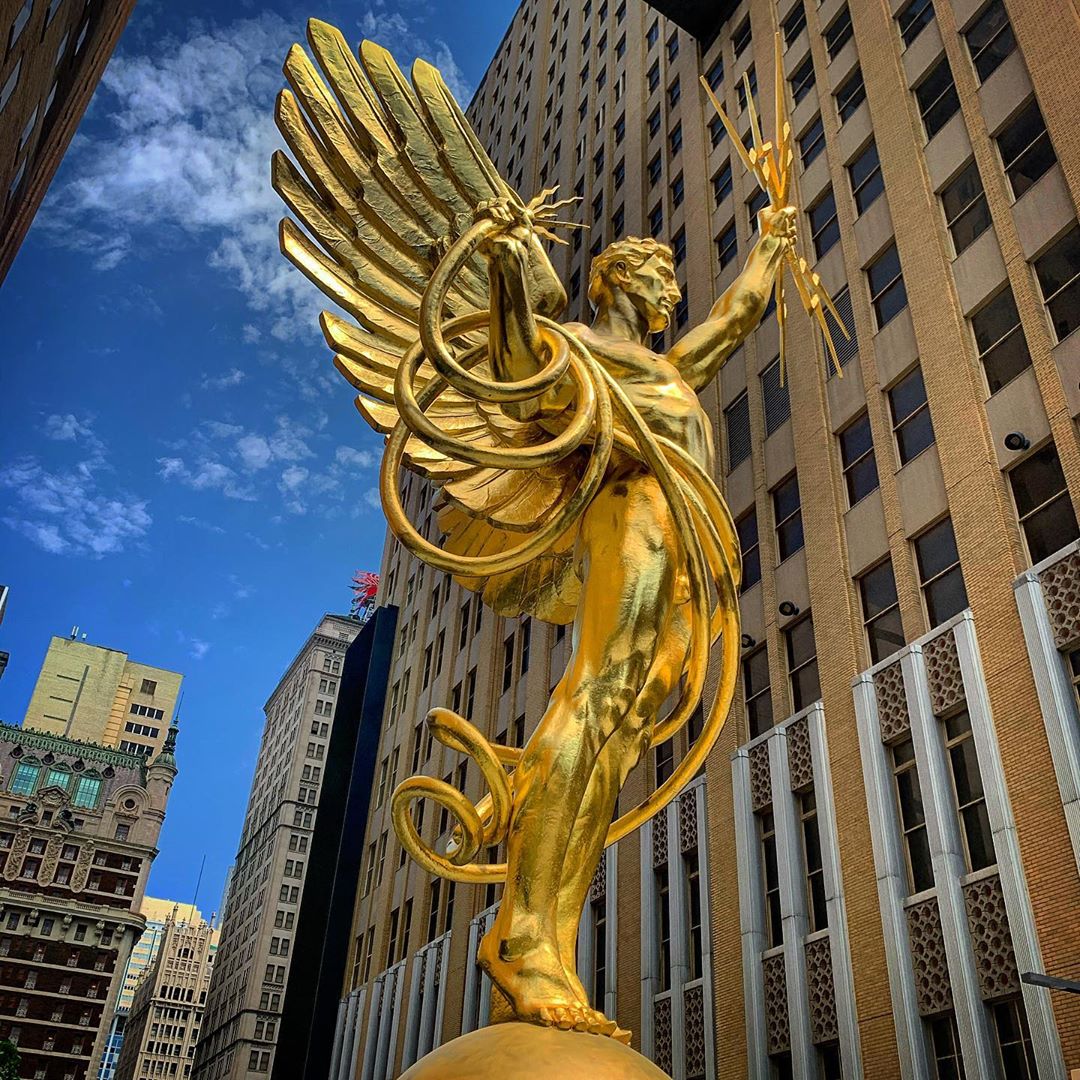

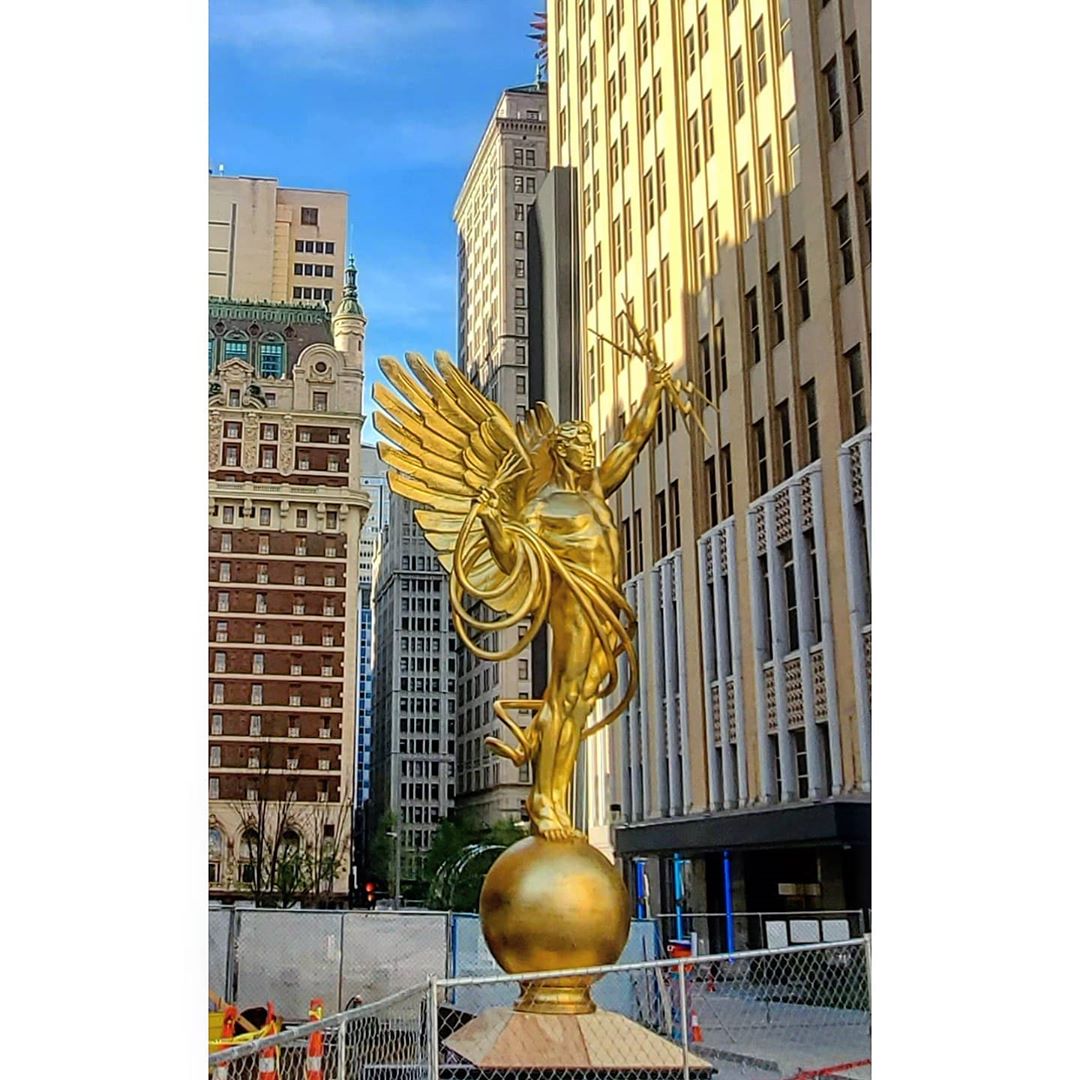



I believe at some point after AT&T left this site, that Pfizer acquired it, but maybe never used it?
AT&T sold its Basking Ridge, N.J. headquarters to Peapack, N.J.-based Pharmacia Corp. for $200 million. The campus, featuring 1.3 million sq. ft. of office space, is located on 140 acres of property, in Basking Ridge, New Jersey. It was then sold to Verizon Wireless.
Thank you. Pfizer merged with Pharmacia in 2003. (My husband worked for Pfizer in Groton/New London, CT as did my father in Maywood, NJ.) I grew up in Basking Ridge from 1969 through 1979. My parents lived there until 2004.
My father worked in the building from 1983 to 1998 (as a child, I remember going there for the Christmas office party each year; we would always walk around and make our way to the waterfall and massive fireplaces). I work as an architectural historian and have wondered about it over the years, so I was really happy to come across this post.
I’d love to know more about the choice of architect/designer, what he said about some of the design choices made, and how he worked with AT&T. Interesting to me that they picked a Philly design firm and not NY. And despite working for Kling and on other big projects, it looks like Barthold’s legacy is very much tied to this complex – it’s mentioned in the first line of his obituary!
I was proud to work at AT&T headquarters several times during my 12 year career which started in Dallas, Texas and took me to Morristown N.J. (the first AT&T Marketing Division office) and then onto Basking Ridge HQ on Maple.
During that time, we were instrumental in transitioning the “OLD Bell System” (with its engineering & manufacturing mentality) -to- the “NEW Bell System” (with a Sales & Market Driven focus)………i.e. the “new” Bell Marketing System.
It was not only a privilege to work at HQ, but an honor to work with the world’s most successful communications company. So sad to see it’s “breakdown” and to know that Verizon ended-up in OUR offices!
The Baskin Ridge area of New Jersey was a great place to LIVE and WORK.
In November of 1981, I became one of the bevy of outside hires made by AT&T’s newly formed international business as the company prepared to once again do business outside the United States after decades of not having to compete for business. It wasn’t long before the new company had already outgrown its Morristown office and we moved into two brand new buildings in Basking Ridge that were right around the corner from AT&T’s “headquarters” complex at 295 North Maple Avenue. In December of 1982, a few of my co-workers (all formerly Western Electric) invited me to join them on a short trip over to the 295 “cafeteria” for lunch. Having come from the somewhat modest office environs of Johnson & Johnson, it was quite an experience observing all of the architectural magnificence while driving through the beautifully landscaped grounds, parking underground, and after a ride on the longest escalator I’d ever seen, coming into the largest open office space I had ever seen, completely covered in luxuriously thick, purple wall-to wall-carpet! The hushed tones of walking across that carpet towards our destination in such a huge open space was for me a bit surreal. But then the question arose – “shall we dine upstairs or down”? Deciding down, we began to descend this incredibly wide spiral stairway half the width of which on both sides was covered in a sea of red poinsettias! Ending, of course, in front of the largest fireplace I had ever seen complete with blazing logs that had to be five or six feet long! (The lunch did not disappoint – certainly not I would call cafeteria food.) I’ve related this experience many times over the years and hardly anyone believes me when I tell it. I’ve lived 2,000 miles away for the past twenty-five years (Lucent retiree, 2001) and have no idea what or who occupies it today, but it would seem worthy of nothing less than the New Jersey state capital complex. Wonder what NYC and Philly would think of that!
I loved working in the international legal department with James Talbot, and I remember Mike Berg as well as some of the other great people who were there too. Before that working at Bell Labs. What I missed was the feeling that we took care of each other. My father, my grandfather, and I worked in different parts of the bells. Never together or even in the same bell. But you had a sense of history. We were all very proud of our contribution and sad to see it go.
I worked for AT&T at 295 N. Maple Ave from 1987-1997. We called it “Shangrila.” I began my career as an Executive Secretary and had the privilege of ascending the brass staircase to C-Suite on many occasions. These leaders were viewed as almost god-like. Golden Boy shined his luster upon the main lobby, which was carpeted in an opulent purple with gold lines. Each building was about 1/4 mile, and you had to plan walking time to get to meetings on time. I roamed the halls quite often and knew many of the 5K+ people in the building. It was a great time to work in corporate America. When you left work at the end of the day, the cell circuits were jammed all along Interstate 295 because almost everyone who worked there had a cell phone.
I started with AT&T in 1978 in Bedminster, NJ. I ended up at the Ridge from 1982 thru 1987 working in HR Data Systems and Workers Comp and then ttransferred to Charlotte, NC. I loved working at the Ridge. They would also have vendors coming in weekly to sell their wares.
I always considered myself so fortunate to have had the opportunity to have worked at 295. It was a blessing to be apart of the executive staff at a special time.